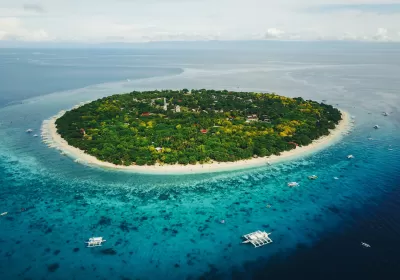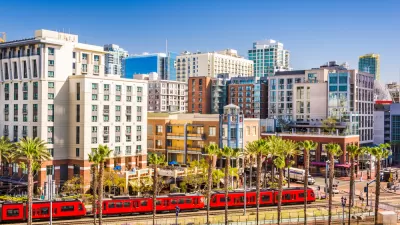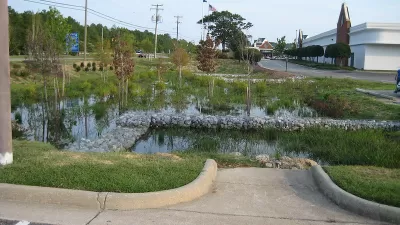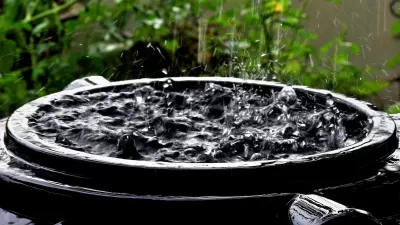Futuristic, eco-friendly cities can be greener and more eco-friendly, thanks to better use of natural resources.

We tend to think of cities as towering skyscrapers, collecting the best and worst of humanity in a small, crowded area—but we always think of them as built on land.
We may have to change our idea of a city if climate change continues to raise sea levels and eat away at currently developed shorelines.
Ocean cities could potentially be the societies of the future—but is it even possible to take a sprawling metropolis like New York or Los Angeles and turn it into a floating wonder?
The History of Floating Cities
Building on the water isn't a new concept. Humans have settled on the sea since 700 AD, when China’s Tanka people began building floating fishing cities. The Netherlands has expanded its coastline since the 1500s, and one of the busiest airports in Japan, Kansai International, is located on an artificial island that was built in 1994.
The main problem with these islands is the impact they have on the seafloor where they are located. They block the sunlight that plankton and sea plants need to survive and upset the seabed where they anchor.
They're often built over existing coral reefs, which can cause damage to these already at-risk habitats. With these environmental risks in mind, why are we looking to the sea as our newest building platform?
Forest and Sponge Cities

A number of land-based cities are already trying to reduce their impact on the environment. China has begun construction on the world's first "forest city," which is designed to help reduce air pollution, produce additional oxygen, and eventually house up to 30,000 people.
Every building in the city will be covered with plants and trees, and the entire city will run on solar and geothermal energy to reduce environmental impact.

Sponge cities, also in China, are constructed to absorb and reuse up to 70 percent of the rain that falls on the city every year. The use of concrete and asphalt prevents rainwater from being absorbed back into the soil, and the water that is absorbed is often contaminated with oil, fertilizer, or other runoff chemicals.

Lingang in Shanghai is the first sponge city, and officials are trying to have at least 80 percent of the city's districts converted by 2030.
Reducing the Impact of Floating Cities
If the goal of these floating cities is to allow human habitation to be a little greener, what can we do to reduce our impact on the ocean when building these architectural marvels?
This challenge falls to the city planners and civil engineers. The trick will be to continue green city building trends—such as the forest and sponge cities—and turn them into blue-green trends in an ocean environment.
Consistent water monitoring in and around the ocean cities will be paramount—not only does it allow engineers to keep track of the areas where they build, but it will also alert them to any problem that could affect the ocean ecosystem.
Integrating natural filtration, by using oyster reefs to filter contaminants from the water, could also enable the engineers to turn these floating cities into something that could change the ocean for the better.
As with most green options, it's up to us to carefully observe the world around us and ensure that our new creations aren't interfering with the natural life cycle of ocean creatures, especially those already endangered or threatened.
Artificial islands should be built in such a way that they don't block migration routes or spawning grounds, or in a way that allows them to provide additional safety to at-risk plants and animals.
For the human inhabitants, waste rules will have to be strict. There is already an enormous floating island of waste plastic in the middle of the Pacific Ocean—we don't need the inhabitants of floating cities making it any larger by tossing their trash out into the waves.
As of 2017, the Great Pacific Garbage Patch was bigger than the country of Mexico.
If we can learn to live with the environment instead of working against it, ocean cities could potentially be the wave of the future—pun intended.
We need to remain more mindful of the impact these cities can have on the ecosystems where they are placed.

Alabama: Trump Terminates Settlements for Black Communities Harmed By Raw Sewage
Trump deemed the landmark civil rights agreement “illegal DEI and environmental justice policy.”

Planetizen Federal Action Tracker
A weekly monitor of how Trump’s orders and actions are impacting planners and planning in America.

The 120 Year Old Tiny Home Villages That Sheltered San Francisco’s Earthquake Refugees
More than a century ago, San Francisco mobilized to house thousands of residents displaced by the 1906 earthquake. Could their strategy offer a model for the present?

Ken Jennings Launches Transit Web Series
The Jeopardy champ wants you to ride public transit.

BLM To Rescind Public Lands Rule
The change will downgrade conservation, once again putting federal land at risk for mining and other extractive uses.

Indy Neighborhood Group Builds Temporary Multi-Use Path
Community members, aided in part by funding from the city, repurposed a vehicle lane to create a protected bike and pedestrian path for the summer season.
Urban Design for Planners 1: Software Tools
This six-course series explores essential urban design concepts using open source software and equips planners with the tools they need to participate fully in the urban design process.
Planning for Universal Design
Learn the tools for implementing Universal Design in planning regulations.
Clanton & Associates, Inc.
Jessamine County Fiscal Court
Institute for Housing and Urban Development Studies (IHS)
City of Grandview
Harvard GSD Executive Education
Toledo-Lucas County Plan Commissions
Salt Lake City
NYU Wagner Graduate School of Public Service






























